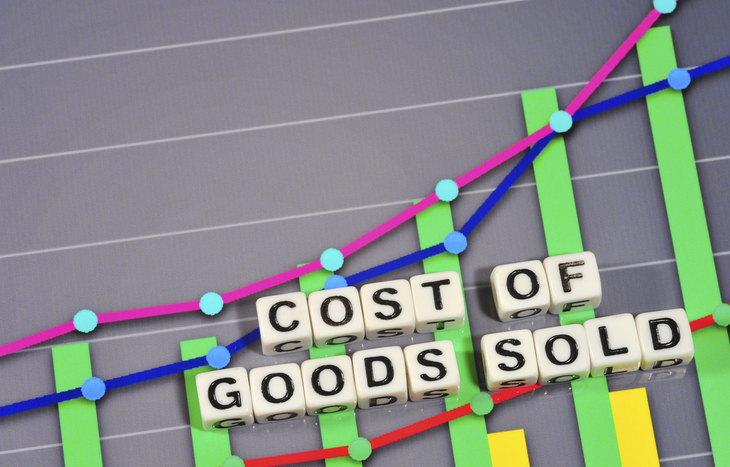Cost of Goods Sold (COGS) measures the “direct expenses” caused by creating any products or services. It involves material expenses, direct labor expenses, and direct industry overheads and is directly relative to income.
The cost of goods sold includes all the costs related to producing the goods or providing the services produced by the company. For goods, these costs can contain the variable expenses included in manufacturing products, like natural resources and labor. It can also include fixed costs, for example, factory overhead, capacity costs, payroll taxes, etc. COGS does exclude general selling costs, including management salaries, advertising costs, customer service, packaging and authorization, and so on.
Banks and investors also use the cost of products sold to compute the gross margin of the business and investigate what percentage of income is available to cover operating costs. The two producers and bankers list the cost of goods sold on the revenue statement as a cost directly after the total income for the duration. COGS is deducted from the total income to appear at the gross margin.
The aim of finding COGS is to compute the “true value” of the product sold in the period. It doesn’t reflect the expense of goods bought in the duration and not being sold or only maintained in stock. It helps the administration and investors monitor the business performance.
If you want to save time in account numbers or to calculate COGS easily. You can get help from our Online Controller Services.
Contents
Key Takeaways
- COGS involves all direct expenses required to make an item for sale.
- Tax rules permit an extended version of COGS, which can decrease tax liability.
- The cost of COGS will change depending on the bookkeeping principles used in the estimation.
- COGS contrasts with operating expenses (OPEX) in that OPEX involves expenses that are not directly attached to developing labor or services.
- COGS is subtracted from incomes to compute gross profit and gross margin.
COGS Formula
The COGS formula is calculated by adding purchases to the starting inventory and deducting the ending inventory for the duration.
Cost of Goods Sold = Starting Inventory + Purchases – Ending Inventory
The starting inventory for the current duration is computed according to the leftover inventory from the earlier year. Any extra inventory bought or created is added to the starting inventory. To appear at the Cost of Goods Sold, goods not sold are deducted from the starting inventory and more purchases.
Example
The cost of goods sold (COGS) is the value of realizing or producing an organization’s products. Therefore the only costs involved in the measure are those directly attached to the development of the products, such as the labor cost, materials, and production overhead. For instance, the COGS for an automaker would involve the material expenses for the parts that go into creating the vehicle in addition to the labor costs used to keep the vehicle together. The value of sending the vehicle to the showroom and the value of the labor used to sell the vehicle would be prohibited.
Let’s assume you are a vehicle producer and had a starting inventory of INR 3, 70, 75,750 last month and purchased another INR 7, 48, 25,650 in inventory. Your remaining inventory at the last of the month was INR 76, 48,234. Find and calculate COGS.
Now, we should use the formula.
COGS = 3, 70, 75,750 + 7, 48, 25,650 – 76, 48,234
Therefore, COGS = INR 104, 253, 166
This data will not only assist you in planning out purchasing for the following year, but it will also assist you with calculating the costs. For example, you can record the costs for each product classification and contrast them with the sales. This comparison will provide you with the selling limit for each product. Therefore you can consider which products you are paying a lot for and which products are allowing him to generate the most money.
Methods for Calculating COGS
There are the following methods to calculate COGS for eCommerce are as follows:
FIFO (First In, First Out): The previous product to be purchased or delivered is sold first. Since costs will generally go up after some time, an organization that utilizes the FIFO method will sell its minimum costly stock first, which interpret as a lower COGS than the COGS documented under LIFO (Last, In, First Out). Thus, the net gain using the FIFO method boost over time.
LIFO (Last In, First Out): The LIFO method is another strategy for esteeming inventory at hand based on the assumption that it will sell the most newly created or purchased inventory. This method measures the cost of goods sold (COGS) when the costs of delivering finished products or purchasing inventory have increased.
Average Cost: This inventory method finds the normal cost per item. It is an important approach that helps remove or minimize inflation’s effect on the value of products in the inventory. This is generally based on the normal cost of all the recent products in stock.
Special Identification Method: This method uses the particular value of every stock unit or product unit to decide the ending inventory and COGS for each duration. In this method, a business owner or the bookkeeper can identify which product was sold at what price.
COGS Metrics and Ratios
To efficiently decide the number of products sold for a business and its monetary health, the ratios and metrics that can use with the cost of goods sold are:
COGS Ratio: COGS ratio is the portion of the sales income spent on delivering sellable product versions, purchasing inventory, etc.
The formula for the Cost of Goods Sold (COGS) ratio is as follows:
COGS ratio = COGS / Net Sales x 100
COGS ratio shows the amount of the final sales price of the products is the cost of goods sold.
For example: If Company Z has COGS of $45,850 and total net sales of $86, 720, then its COGS ratio will be:
(45, 850/86,720) x 100 = 52.8%
Gross Profit Margin: The percentage of sales income an organization holds after incurring all its COGS. The larger the gross margin, the more a business can hold from each dollar of income.
Gross margin = ((Sales revenue – COGS) / Sales Revenue) x 100
Inventory Turnover: It is a ratio that determines how well an organization can create sales from the inventory. Inventory turnover demonstrates the multiple times the organization has sold and returned its inventory in a given time. To compute it:
Inventory formula = COGS/ Inventory Average
The average of any inventory can be produced by adding the ending and starting of the inventory and thus splitting this value by two. High inventory turnover is evidence of additional sales and moderately good inventory.
FAQs
Ques1. How would you compute the Cost of Goods Sold (COGS)?
The cost of goods sold (COGS) is computed by including the direct expenses required to produce a company’s income. COGS depend only on the costs directly used in producing that income, including the company’s stock or labor expenses that can be attributed to particular sales. By contrast, fixed costs like administrative salaries, rent, and utilities are excluded from COGS. Inventory is an incredibly significant part of the cost of goods sold, and bookkeeping principles allow multiple approaches to involve it in the calculation.
Ques2. Is the cost of goods sold an expenditure?
Yes, we should document the cost of goods sold as an expenditure. COGS is viewed as an expense of running the business. To make an inventory, we need to spend money, which may involve the cost of natural substances, the cost of time and work, and the cost of running equipment. Selling the product makes a profit, but a part of that profit was lost because of the cost of making the product.





